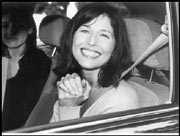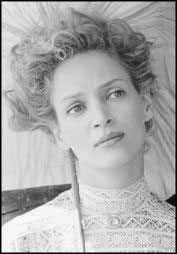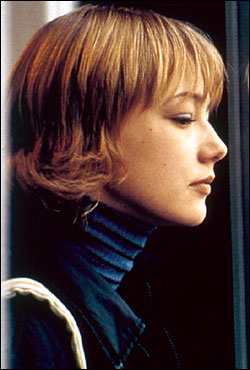LOVELY & AMAZING
written and directed by Nicole Holofcener
with Catherine Keener, Brenda Blethyn, Emily Mortimer, and Dermot Mulroney
opens July 19 at Harvard Exit
If one trait can be said to define a family, then matriarch Jane Marks (Brenda Blethyn) has transmitted her fluttering insecurity to her three daughters all too generously. Of course, living in Los Angeles, the epicenter of insecurity, gives all four of them daily reinforcement for their (groundless) fears in Nicole Holofcener’s glowing, insightful character-comedy Lovely & Amazing.
Divorced and comfortably well-off even by Beverly Hills standards, Jane is sure that liposuction will be her quick fix. Soon after we meet her, she’s undergoing the humiliation of having her stomach diagrammed like a football play by a doctor her own age, on whom—inevitably—she develops a crush.
Michelle (Catherine Keener), Jane’s vaguely “artistic” eldest, peaked as homecoming queen and now, nearing 40, seethes about life in general and her marriage in particular. (Her mothering skills seem limited to trimming her young daughter’s nails by nibbling them.)
Wafer-thin middle daughter Elizabeth (Emily Mortimer), who takes in every stray dog she sees, is a rising actress. Perhaps. Although she’s already had small parts, she has no defenses against the callousness of the movie biz. Bad enough when she has to do a “chemistry read,” a spot test of whether she turns on reigning hottie Kevin McCabe (Dermot Mulroney) enough to be his co-star. Worse, every time she gets turned down, she’s sure they’re right.
Annie (Raven Goodwin) is the youngest and the newest addition to the Marks clan. Warm and well-meaning Jane, who adores her, has adopted the chubby black 8-year-old from a crack-addicted mother. In some ways, Annie is the most self-possessed member of the family, although she’s developed some pretty scary defenses against questions of race, class, and being overweight.
The action turns on the days following Jane’s surgery, which does not go quite as smoothly as her unctuous doctor had promised. As Michelle and Elizabeth work Annie’s care into their daily lives, we see those lives and their fragility up close.
Why should we want any part of this nest of near neurotics? Because Holofcener has a diabolical ear and a generous spirit; add her ability to give these hand-picked performers room enough to expand, and you have a combination rare in the increasingly predictable world of independent filmmaking.
If Holofcener could get out of the indie cul de sac and gain some proper resources, if she didn’t have to wait six years for her next feature (as she did between Walking and Talking and Lovely & Amazing), her wit, skill, and heart would make her a major-league artist. (Maybe throw in a few cans of film next time, no matter how persuasive the digital-video camera work is here.)
Holofcener has also assembled a killer cast. The divine Keener, whose part was written for her, has a transparent defenselessness so touching it almost balances Michelle’s vast self-absorption. When that finally gives way, in her first-ever act of generosity, the moment is pure enough to bring on tears. At the other end of the scale are Keener’s delicately hilarious scenes with young Jake Gyllenhaal as Michelle’s smitten One Hour Photo co-worker.
Emily Mortimer’s quality is shy tenacity. The scene in which Elizabeth stands, naked and flawless, begging McCabe—whose bed she’s just left—to catalog her imperfections is, for women, a high-water mark of horror. Men may not forget it either, although possibly for different reasons.
Mulroney’s intrinsic good-guy-ness makes that scene as bearable as it is memorable, but it’s Holofcener’s precisely detailed writing throughout that gives the film its whole lovely shape.









